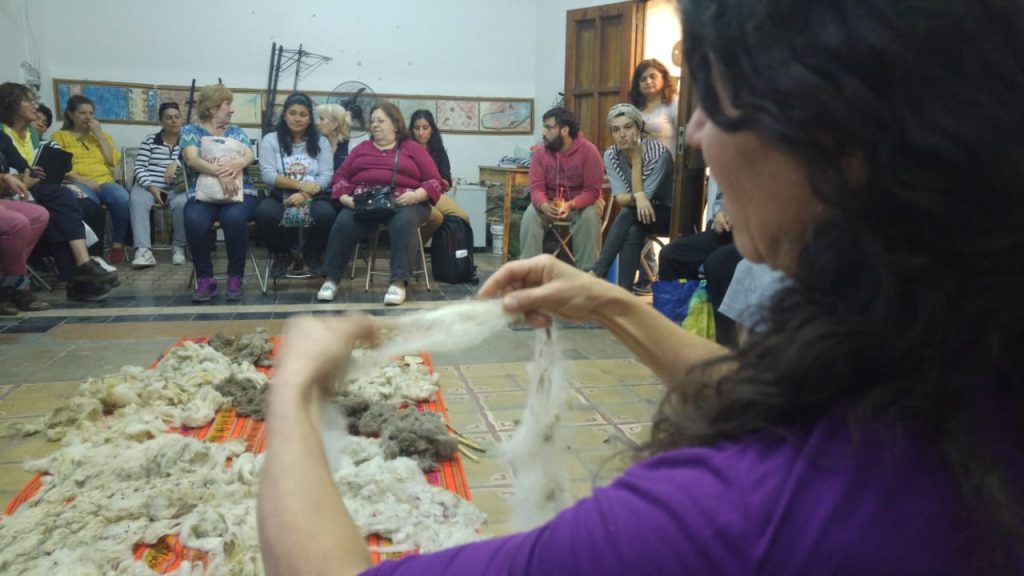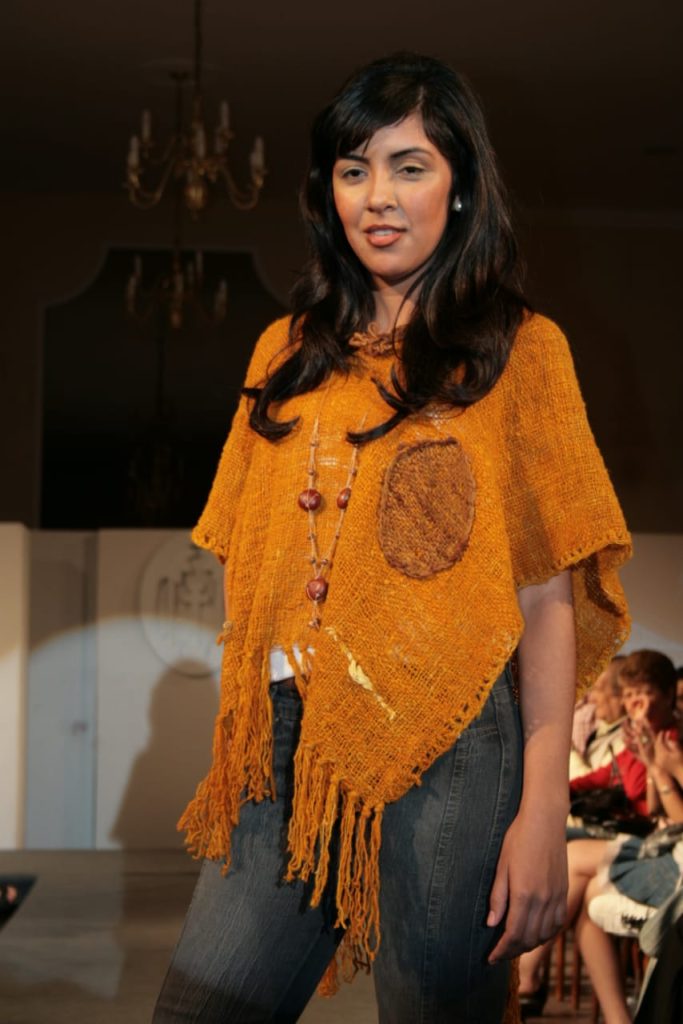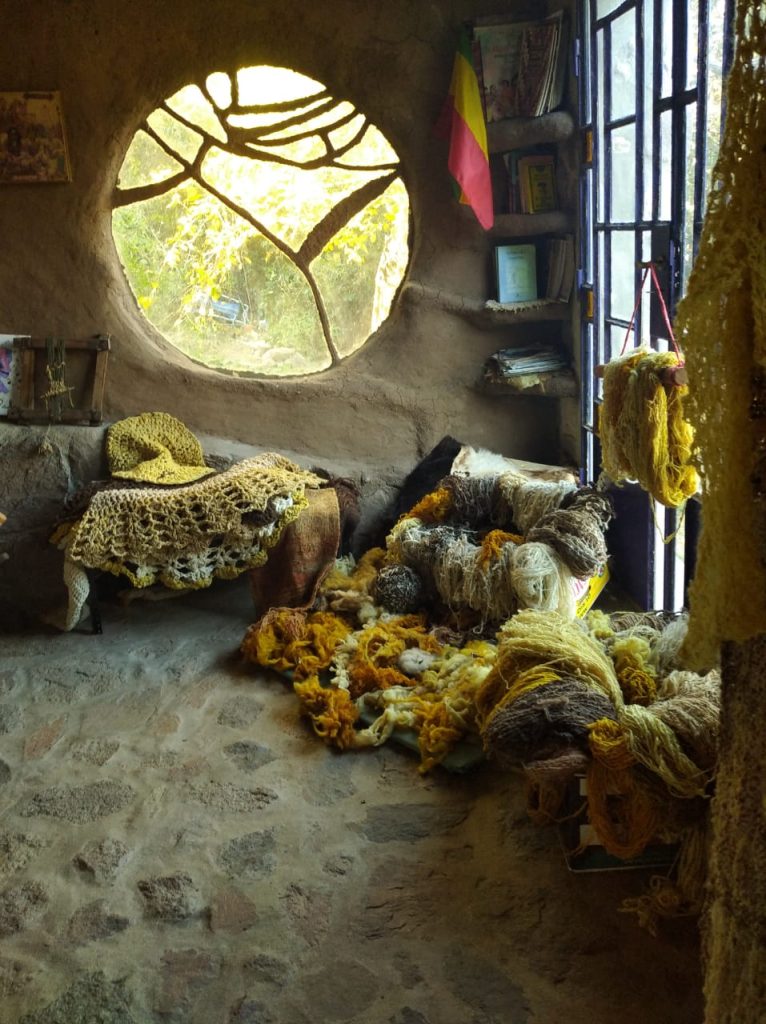More and more designers choose to launch all kinds of initiatives to bring sustainability to a wider audience, and projects like the one proposed by Paula Rodriguez at Casa Amancay prove that it is possible to produce textiles in a responsible way. With options like this, the public has more and more choices to build a sustainable closet.
A passion for a sustainable fabric
Paula Rodríguez began her career in 2001, when for economic reasons she decided to start selling the handmade fabrics created by one of her friends. “I rediscovered my passion for the thread, the weft, the color, the making of the garment, the passion for the whole process”, explains the designer. That was when she started to learn the techniques of creating fabrics; together with her partner at the time, she was able to explore various ancestral techniques, as he worked hard to build spinning wheels and looms with all kinds of accessories.
Once she managed to develop her weaving skills, she collaborated with several communities in different Argentinian provinces, which provided her with new knowledge about the culture of textile production. Once settled in Salsipuedes, she founded what is still today Casa Amancay, where Paula Rodriguez continues to develop her activity. “She used to organize meetings in which the objective was to share and exchange know-how and knowledge; to nourish ourselves with the exchanges and go back to our territories to disseminate what we had learned”.

Of course, Casa Amancay also has its business side. The products that Paula Rodriguez creates by hand can be bought on site in her shop in Salsipuedes; they can also be sent to the customer, if it is not possible for him/her to come in person to get them. “We have an exhibition and sales space, where we have fashion shows, performances and some musical acts”, explains the founder of Casa Amancay.
How is sustainable fabric produced?
The environment and the community surrounding Casa Amancay is more than enough for Paula Rodriguez to get all the materials she needs for her knitted works. “We spin the yarn with fleece from local sheep, or we buy the wool made from the spinners who, like us, spin their fleeces with a pedal-powered spinning wheel”, Rodriguez adds about the process of sourcing her materials. “We use herbs, flowers, roots or barks to color our garments. When we use local plants to color the yarns, the colors of the territory in which our work is produced remain in the process”.

The reason why this creator decided to carry out her work in this way is much deeper than it might seem. “Making garments with raw materials taken directly from nature, and that raw material is obtained only with handmade processes, are rights that we have to appropriate. So we can say how and what we wear; our garments speak of our culture”, says Paula Rodriguez about the philosophy behind the creation method of her products. ” The production process that we have been developing at Casa Amancay -and that we invite everyone to join us- has to do with a way of making products at a human scale, organic and beneficial to the land in which we live”.
Natural dyeing, a sustainable alternative
There are many natural resources that can be used to dye fibers or fabrics, all without generating waste that can be polluting to the environment. In order to dye a textile at home, the following steps must be followed: three tablespoons of vinegar and salt for each liter of water in which the fabrics are to be dyed. To this mixture, different ingredients should be added, depending on the result to be obtained:
- Yellow: pomegranate is perfect for achieving a light yellow tint (even though the fruit has such an intense reddish tone); celery or marigold flowers will help to achieve more intense yellow tones.
- Orange: carrot or pumpkin are the most common ingredients to dye a garment in orange tones. One option that might be more surprising is eucalyptus.
- Red: many plant roots can be used to achieve a reddish tint, such as dandelion roots. For a much more vibrant result, beet is another possibility.
- Pink: fruits will be your best allies in this case, since cherries will be used to achieve a very intense pink, and strawberries and raspberries for more pastel shades of pink.
- Green: leaves such as matcha tea or spinach will be perfect to achieve soft shades of green in our garments.
- Blue: blackberries will help you in the process, but it is very difficult to get a deep shade of blue.
- Earthy tones: coffee beans or black tea are good options to achieve different intensities of brown and gray.

A wide range of products
After so many years sharing knowledge with different creators, Paula Rodríguez is able to offer a wide variety of products at Casa Amancay which meet most of the textile needs of any person. “We knit blankets, ponchos, carpets, pillowcases, pashminas, clothes, scarves, hats… We make garments and decorative items, with exclusive and unique patterns. Moreover, we even accept custom orders”, the designer explains.
Casa Amancay’s social networks have all the information for those who wish to take a closer look at Paula Rodríguez’s work, and get some of her creations. The local handicraft store is part of a complex in Salsipuedes; there, all kinds of activities are carried out to help people learn how they can live a more sustainable lifestyle. All these activities can be known, for example, through their Instagram profile, @casa_amancay.





